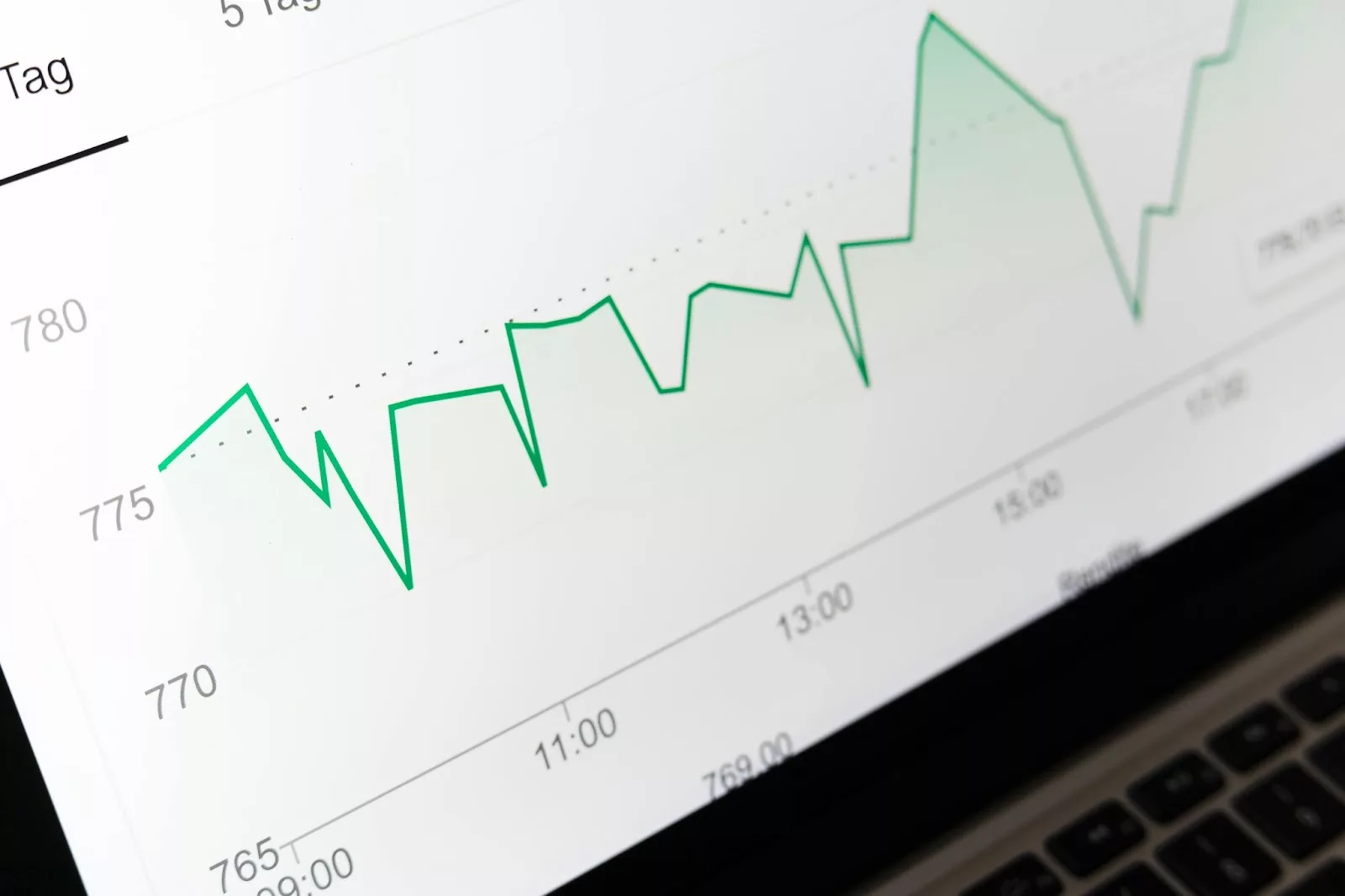Imagine having a tool that takes your business above and beyond the competition. That’s where eCommerce analytics come in. These tools provide essential insights into customer behavior, sales performance, and data-driven decision-making. In God, we trust; all others must use data, right?
Let’s break it down – we’ll define eCommerce analytics, check out analysis platforms, and dive into the issues faced in working with analytics. After that, we’ll explore the upcoming trends in eCommerce analytics for 2024.

Image Source: Photo by Yan Krukau from Pexels
6 Key Components of eCommerce Analytics
There are numerous components a business may need for digital commerce analytics. Let’s look at the most important ones.
#1. Customer Behavior Analysis
Knowing your customer’s behavior is key in eCommerce analytics. It helps you understand what they like and dislike, shaping a better online shopping experience and smart marketing tactics to draw in more customers.
Some key areas in customer behavior analysis include:
- Browsing behavior: With heatmaps and session recordings, you can find out what customers like most on your site, where they spend the most time, and how they move around it.
- Purchasing habits: Getting a grip on what items customers buy frequently can provide insights into hot products, hit promotions, and customer likes. This could get down to brass tacks such as dissecting their go-to payment methods, delivery options they lean towards, or the time of day they’re most likely to make a purchase.
- Abandonment analysis: This pinpoints the stage at which customers back out from their shopping carts or leave your website without locking in a purchase.
- Customer feedback and reviews: It is a goldmine of qualitative data that can shed light on what customers are drawn to or put off by in your products or services.
- Return patterns: Monitoring returns can help identify potential problems with specific products, improve quality control, or fine-tune your product descriptions to align with customer expectations.
#2. Sales Performance Metrics
What gets measured gets managed, and there are always concrete measures that showcase how your eCommerce operations are stacking up. Detailed below are some key eCommerce performance metrics:
- Conversion rate
- Average order value (AOV)
- Customer lifetime value (CLV)
- Shopping cart abandonment rate
- Repeat Customer Rate
- Sales by traffic source
- Product Return Rate
- Net Promoter Score (NPS)
#3. Website Traffic Analytics
Who are your users? How did they find your website, and where are they located? Everything from users’ browsing journey to overall engagement with your site is important. With this information at your disposal, you can build a solid portrait of your users and tweak your eCommerce marketing strategies to increase the rate at which that traffic turns into paying customers.
The data worth paying attention to:
- Total visitors
- New vs. returning visitors
- Channels of acquisition
- Page views and average session duration
- Bounce rate
- Conversion rate
By keeping a close eye on these website traffic metrics through the web analytics dashboards, you can get the hang of how well your eCommerce site is drawing in visitors, holding their attention, and converting them into customers.

#4. Channel and Campaign Performance Analysis
Whether you are using email marketing, building social media campaigns, Google Ads, or content marketing strategies, you need to estimate the success of your actions. Here are measures – your potential KPIs – that show how well your campaign is doing including:
- Click-through-rate (CTR)
- Conversion rate
- Cost-per-click (CPC)
- Return on ad spend (ROAS)
- Engagement metrics for social media campaigns
#5. Funnel Analysis
Is your funnel working and bringing new customers? Here are some critical points to consider when estimating the quality of your eCommerce store’s funnel:
- Awareness stage: It’s crucial to dig into how potential customers act upon landing on your website for the first time. Which pages do they zero in on initially? How long do they stick around? Which elements draw them in?
- Consideration stage: This involves measurements such as the number of product page views, the duration of time spent on these pages, and the volume of repeat visits.
- Conversion stage: This marks the moment when a visitor makes a transaction or a specific goal is triggered. By looking at numbers like how often items get added to carts, how often checkouts are finished, and the conversion rate, you can find out what makes a visitor a customer.
- Retention stage: Post-purchase behavior data such as return rates, feedback, and repeat purchases can provide insight into customer satisfaction and loyalty.
- Abandonment points and drop-off rates: Knowing where customers can stop the buying process shows where we can improve. The funnel stage with the highest drop-off rate is generally the best place to start for optimizations.
- Paths through the funnel: Not all customers will follow the same path through your eCommerce funnel. So optimize after studying and A/B testing your funnel paths.
#6. Customer Satisfaction Metrics
Understanding customer satisfaction levels is crucial for developing a high-performing, growth-oriented business. Each metric can highlight different aspects of customer satisfaction and loyalty:
- Net Promoter Score (NPS): This is a standard way to see if customers might recommend your business to others, which can indicate if customers are happy and loyal.
- Customer Satisfaction Score (CSAT): This is a primary method to see how pleased customers are after they use your product.
- Churn Rate: This is a calculated rate (in %) of customers who stopped buying from your store.
- Retention Rate: This is the opposite of the churn rate. It tells you what percentage of customers still buy from your store.
- First Contact Resolution (FCR): This metric increases customer issues straightened out on the first go-round.

Image Source: Photo by Markus Winkler from Pexels
Tools and Technologies of Digital Commerce Analytics
Now that we have covered all the basics, let’s see which options you have when looking for tools to analyze your business.
Google Analytics 4 (GA4)
Google Analytics 4 (GA4) is the recent version of the Google Analytics tool that is developed by Google to help website and eCommerce store owners/admins like you to track and report incoming and outgoing traffic from your website/eCommerce store. It is a free tool that helps you track different types of insights such as:
- Audience Demographics and Interests
- Acquisition Reports
- Behavior Flow
- Real-Time Reporting
- eCommerce Tracking
- Goal Setting & Conversion Tracking
- Bounce Rate & Exit Pages
- Site Speed
GA4 is a must-have analytics tool for any eCommerce business. It can help you with a lot of things from understanding the user journey on your store to the metrics of your marketing campaigns.
eCommerce-specific Analytics Platforms
Alongside Google Analytics, numerous eCommerce-specific analytics platforms provide a detailed look at your metrics. These platforms are specifically developed to get detailed insights into the user behavior on your website or ecommerce store. Here are a few examples of these platforms:
- Hotjar is a product insights tool that digs deeper into user behavior that traditional analytics tools for e-commerce can’t pick up on — such as hesitations, abrupt turnarounds, and idle scrolls that don’t result in clicks.
- Coupler.io streamlines data collection and integration from diverse applications, facilitating the creation of insightful dashboards for informed decision-making. It integrates data from popular eCommerce platforms like WooCommerce and Shopify, enabling businesses to enhance eCommerce reporting effectively.
- Woopra keeps track of customers’ journeys and figures out their lifetime value in real-time, a process that would have otherwise taken weeks to assemble. It helps you understand your best buyer personas and tailor the experience around your ideal customer types.
Other popular eCommerce-specific analytics platforms are Conjura, Optimizely, Crazy Egg, Matomo, Polymer, Heap, Looker, and CAKE.
Steps to do Data-driven Decision Making
You are ready to make informed decisions when you see all the eCommerce data you found with GA4 or other analytics tools for eCommerce. Which decisions can you make based on data you’ve found?
Step 1: Personalization Strategies
Customers love personalization. But greetings like “Hello Jane” don’t surprise people anymore. To make your efforts truly personalized, you can use all the data on personal preferences you get. It can empower you to tailor personalized experiences, offerings, and communication for various customer segments, leading to more engaging and rewarding customer interactions.
Here are some examples of personalization in eCommerce:
- Product Recommendations
- Personalized Email Campaigns
- Dynamic Pricing
- Website Personalization
- Tailored Advertisements
- Personalized Content
Step 2: Inventory Management Optimization
Suppose you’re running an online clothing store and see that people tend to buy more red sweaters closer to Christmas. So, the best decision for you is to stock up on these sweaters ahead of time to meet the demand. This is a simple example of how data on a number of purchases can help you manage your sales.
eCommerce analytics can be used to improve inventory management operations by:
- Demand forecasting
- Reorder point determination
- Safety stock optimization
- Overstock and dead stock reduction
- Improved supplier management
Step 3: Pricing and Promotion
Your prices don’t depend solely on the production expenses. eCommerce analytics directly affect pricing strategies and promotions. Here are a few examples that illustrate this process:
- Dynamic pricing models: Airlines and hotel industries frequently adjust prices based on real-time demand, competitor prices, and other variables. eCommerce businesses can adopt similar models. For example, Amazon changes its prices based on competitors’ charges, how much people want a product, and what time it is.
- Volume discounting: This strategy offers decreasing per-unit costs while increasing the volume of products purchased. Costco effectively implements volume discounting . Customers can stock up on items at lower prices, which translates into savings and ramps up sales for the business.
- Flash sales or promotional events: Offering short-term discounts can significantly increase sales. A great example is Alibaba’s ‘Singles Day’. This one-day event has big annual sales because of huge discounts, attracting millions of shoppers.
- Seasonal pricing: Many big eCommerce companies use seasonal pricing strategies. For example, they increase the price of winter clothing during the cold season and roll out discounts in off-peak seasons.
Top 3 Common Issues with E-commerce Analytics to Avoid
Much like with any other tool, you need to know about hidden pitfalls when collecting or analyzing data.
1. Misinterpreting Data
No business decision should be made in a rush. When working with analytics, you should see the whole picture before reaching conclusions.
Let’s take a clothing shop that has noticed that the average time users spend on website sessions has suddenly decreased. Usually, it may be considered a tragedy. But what if the website underwent some updates to make it faster and more user-friendly so customers could find what they need and complete transactions quickly? In such a situation, a lower session duration indicates an improvement.
2. Ignoring Mobile Analytics
How many users visit your website using smartphones? Businesses may often overlook this trend and miss out on essential insights about this segment of their customer base.
Mobile analytics informs you about how mobile users interact with your website or application, if visiting your pages from smartphones is comfortable, and how these interactions convert into sales. Considering this data carefully, you can do conversion rate optimization (CRO) for your mobile experience.
3. Overlooking Security Measures
eCommerce involves dealing with sensitive customer information, including personal and credit card information. This makes security paramount. Do you have a powerful cybersecurity policy in place? It is something your users may notice only in the case of a breach, but do not underestimate the importance of security protocols and ensuring proper handling of all data, particularly sensitive data.

Image Source: Photo by Kampus Production from Pexels
Top 3 Future Trends in eCommerce Analytics
Analytics show past and ongoing business activities’ insights, but we can’t turn a blind eye to emerging trends shaking up established analytical practices. To keep up with the pace, eCommerce store owners must stay in the loop about key trends poised to flip the market on its head.
1. AI and Machine Learning Integration
Artificial Intelligence and Machine Learning are changing how all industries work as soon as they enter the game. Analytics is not an exclusion. By processing large amounts of data rapidly and accurately, AI and ML can dig up deeper insights that traditional data analysis methods might overlook.
Among the numerous analytical features influencing eCommerce, predicting buying patterns is a game changer. AI and machine learning integration provides tools to carve out insights from massive data sets, offering businesses an edge. Those looking to delve deeper should consider online courses that simplify how AI can manage purchasing habits and preferences efficiently. Businesses eager to harness such potential need teams equipped with cutting-edge skills; new learners and seasoned pros alike can learn machine learning from comprehensive resources and gain hands-on experience.
Consider these examples of where AI and ML are shaping eCommerce analytics:
- AI algorithms can break down your customers into distinct groups based on purchasing habits, browsing patterns, and demographic details. This paves the way for highly targeted advertising and personalized marketing efforts.
- Chatbots and virtual assistants powered by AI, like those employed by H&M, dish out personalized shopping guidance, elevating the customer journey and revving sales.
- AI can consider demand, competitor pricing, and time of day, enabling companies to tweak their prices on the go. This is similar to Uber, which rolls out dynamic pricing depending on demand and car availability.
- AI can identify fraudulent activity by recognizing patterns in transaction data.
2. Enhanced Predictive Analytics
Predictive analytics is stepping up in accuracy and influence. Modern tools are learning to predict user behaviors and trends, which in turn helps businesses make data-based decisions and tweak personalization.
Amazon and Netflix use machine learning algorithms to analyze customers’ past behavior and predict what products or services they might be interested in.
3. Real-time Data Processing
The ability to quickly gather and analyze data is becoming crucial in eCommerce. Handling data in real-time allows businesses to promptly respond to shifts in customer behavior or market trends.
Imagine adjusting prices based on demand, refining ad content as soon as it catches attention, or addressing cart abandonment right when it happens. In a competitive online landscape, real-time data processing can really set businesses apart.
Conclusion
The way we’re measuring eCommerce analytics is evolving and getting more sophisticated. Yet, it’s still super important for businesses as it gives us precise user data. Sure, you’ve got tons of data at your fingertips, but what really counts is how you understand it and take action. Get your data working for you, and see your eCommerce business reach new levels!
Offer Wholesale Pricing & Volume Discounts on Your Shopify Store
Try the Wholesale Pricing Discount app for Free!








